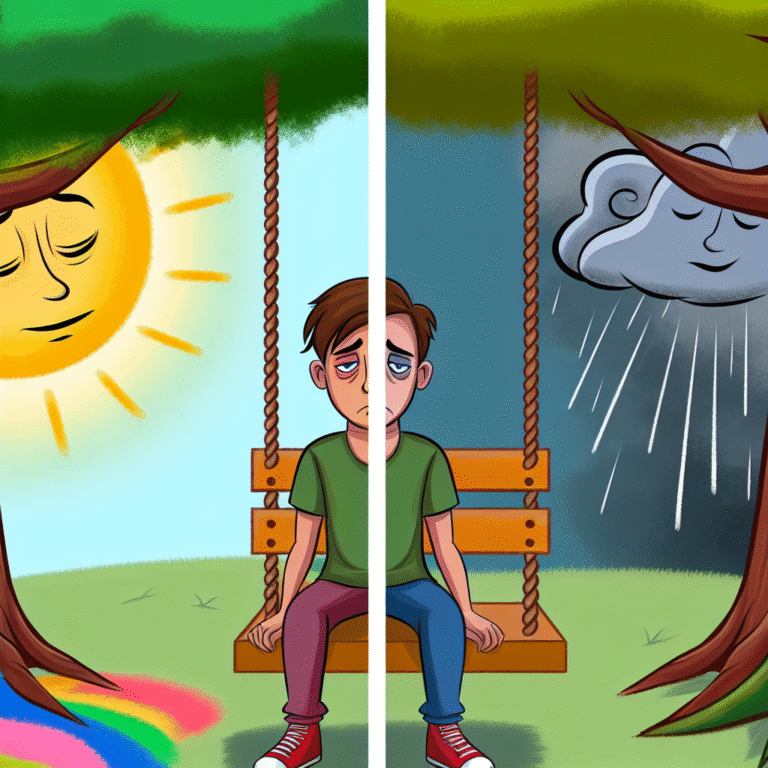
Decoding Trauma: Understanding PTSD Triggers and Their Impact
Introduction
Trauma can shape an individual’s life in profound and often devastating ways. Understanding the complexity of trauma and how it manifests, particularly in the form of Post-Traumatic Stress Disorder (PTSD), is essential for both healing and growth. As we delve into "Decoding Trauma: Understanding PTSD Triggers and Their Impact," we aim to shed light on the often-overlooked nuances of PTSD triggers, their various forms, and the significant influence they exert on affected individuals.
In a world that is increasingly aware of mental health issues, the need to decipher the language of trauma is more vital than ever. It’s through this understanding that we can promote healing, destigmatize mental health struggles, and equip individuals with tools to manage their triggers effectively. Let us embark on this journey of discovery and empowerment.
The Nature of Trauma and PTSD
What is Trauma?
Trauma is an emotional response to a distressing event—one that exceeds a person’s ability to cope. This could be the result of war, abuse, an accident, or any life-altering incident. When left unaddressed, trauma can transform into PTSD, characterized by invasive memories, heightened reactivity, and emotional numbness.
Understanding PTSD
PTSD can occur after someone experiences or witnesses a traumatic event. Symptoms can range from re-experiencing the traumatic event (flashbacks) to increased arousal (such as difficulty sleeping and irritability). Understanding PTSD involves recognizing its symptoms, but to truly decode trauma, we must also explore the triggers that evoke these responses.
Decoding PTSD Triggers
What Are PTSD Triggers?
"Decoding Trauma: Understanding PTSD Triggers and Their Impact" involves deciphering the elements of triggers—those external or internal stimuli that provoke the symptoms of PTSD. Triggers could be anything from a specific noise, scent, or location associated with the traumatic event to internal triggers that stem from thoughts and memories.
| Types of PTSD Triggers | Examples |
|---|---|
| Internal Triggers | Memories, thoughts, feelings |
| External Triggers | Sounds, smells, sights, places |
How Triggers Affect Individuals
Triggers can lead to a range of emotional responses, including anxiety, fear, anger, or sadness. Decoding these triggers is vital for creating effective coping strategies. Understanding when and why a person reacts can help them regain control over their emotional responses.
Case Study: Veteran Experiences
Consider the case of Michael, a military veteran who returned from combat experiencing significant PTSD. He often found himself in intense distress at the sound of fireworks. For him, the explosions triggered memories of gunfire and combat. Recognizing this trigger was the first step in his healing process. He worked with a therapist to create a plan that included gradual exposure and relaxation techniques, allowing him to reclaim his peace during celebrations.
Analysis: Michael’s experience highlights how critical it is to recognize specific triggers in the context of PTSD treatment. Knowledge can empower individuals like Michael to modify their environments and responses, ultimately leading to a greater sense of control and healing.
The Role of Therapy in Decoding Trauma
Traditional Therapeutic Approaches
Therapy often plays a pivotal role in decoding trauma. Common approaches include Cognitive Behavioral Therapy (CBT) and Eye Movement Desensitization and Reprocessing (EMDR). These therapeutic modalities can equip individuals with strategies to manage triggers and reduce their impact on daily life.
| Therapeutic Approach | Key Features |
|---|---|
| CBT | Focuses on changing negative thought patterns |
| EMDR | Utilizes bilateral stimulation to process trauma |
Case Study: Sarah’s Journey
Sarah, a survivor of domestic abuse, found therapy to be transformative. By exploring her triggers in a safe environment, she discovered that certain phrases reminded her of her abusive partner. Through EMDR, she gradually processed these memories, reducing their hold over her emotional state.
Analysis: Sarah’s journey illustrates that therapy can facilitate a deeper understanding of PTSD triggers. By continuing therapy, Sarah not only learned to manage her triggers but also developed resilience and self-compassion.
Self-Help Strategies for Managing Triggers
Practical Techniques
Understanding and managing PTSD triggers can be enhanced through self-help strategies. Here are some techniques that can be employed:
Mindfulness Meditation: Mindfulness can help individuals remain grounded when faced with distressing triggers.
Journaling: Writing about feelings and triggers can be a cathartic release, helping to organize thoughts and gain insight.
- Breath Control: Practicing deep breathing can effectively lower anxiety when a trigger arises.
Case Study: David’s Coping Mechanism
David, who experienced trauma from a car accident, found solace in journaling. Documenting his thoughts whenever he encountered a triggering situation allowed him to analyze his responses and find ways to cope. Over time, David’s emotional reactions during flashbacks became less intense.
Analysis: David’s use of journaling reflects the power of self-awareness and active coping strategies. Decoding trauma through introspection can foster healing and resilience.
The Impact on Relationships
How Triggers Affect Interpersonal Connections
Beyond the individual, PTSD triggers can significantly impact relationships. Partners, friends, and family may struggle to understand the nature of triggers and their effects, leading to frustration and conflict.
Case Study: Lisa and Tom’s Relationship Struggles
Lisa, a trauma survivor, often reacted strongly to seemingly minor events, much to her partner Tom’s confusion. After recognizing her triggers—particular tones and phrases that echoed her past—Tom learned to create a supportive environment.
Analysis: This case underlines the necessity for open communication about trauma triggers within relationships. Understanding the root of emotional responses can foster empathy and strengthen bonds.
Conclusion
Decoding trauma, particularly in understanding PTSD triggers and their impact, is a journey that requires compassion, knowledge, and often, professional guidance. The road to healing is rarely linear, yet by exploring the components of PTSD and developing coping strategies, individuals can regain a sense of control over their emotional landscapes.
The insights shared here aim to empower those affected by trauma, paving the way for healing and hope. Remember, healing is possible, and you are not alone.
FAQs
1. What are the most common PTSD triggers?
Common triggers can include loud noises, specific locations, scents, or certain phrases that recall the traumatic experience.
2. Can PTSD symptoms develop years after the trauma?
Yes, PTSD symptoms can emerge long after the traumatic event, sometimes triggered by related experiences or stressors.
3. How can family members support someone with PTSD?
Open communication, patience, and an understanding of the individual’s triggers can help family members support their loved ones effectively.
4. Are there any medication options for PTSD?
Yes, various medications, including antidepressants and anti-anxiety medications, can be prescribed to help manage PTSD symptoms, but a healthcare provider should guide this process.
5. How long does it take to heal from PTSD?
The duration of healing from PTSD varies widely based on individual circumstances, support systems, and therapeutic engagement. It can take months or years, but progress can be made.
Decoding trauma and understanding PTSD triggers is not only crucial for those directly affected but also for society as a whole. Together, we can foster a compassionate understanding of trauma and its complexities.













